by Ruth Blacker Waite, 2021
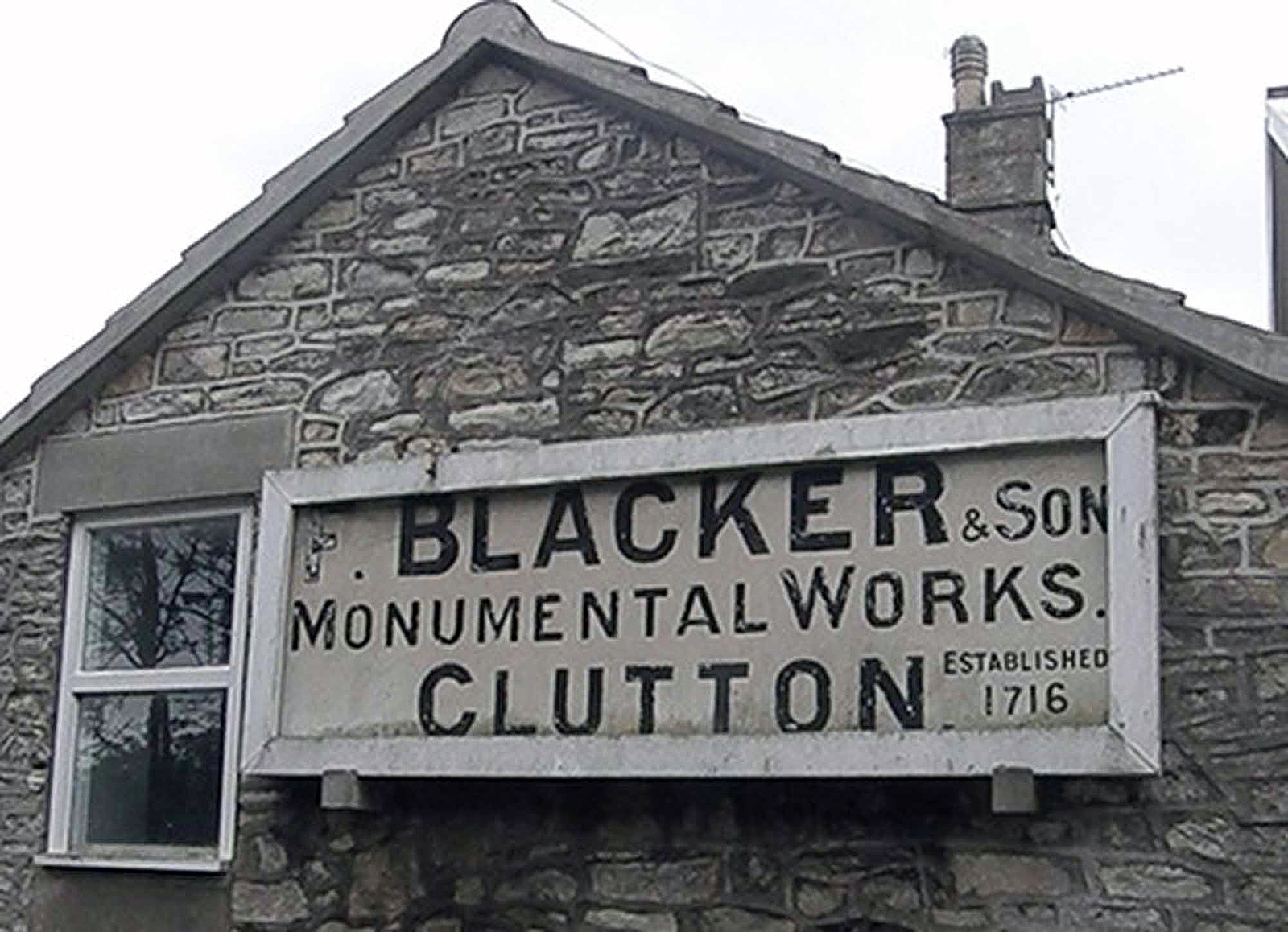 The F. Blacker & Son Monumental Works in Clutton, taken March 2004. The sign was added when Frederick inherited the business.
The F. Blacker & Son Monumental Works in Clutton, taken March 2004. The sign was added when Frederick inherited the business.
In March of 2004 my husband and I traveled to the British Isles to visit the places where we served our missions, and the places where our grandfathers were born. My paternal grandfather, Thomas Blacker, was born in Ystrad-dyfodwg, Glamorganshire, Wales. His father, Edward Blacker, was born and raised in Clutton, Somersetshire, England. Clutton is the home of many of my Blacker ancestors.
My father, Loyn Blacker, served an LDS mission in the British Isles from 1928 to 1930. In March of 1930 he went to Glamorganshire and Clutton to visit his relatives. The section below taken from his life history speaks of his visit.
On the morning of March 3rd I left Penrhywceiber for Cardiff and from there to Bristol. I stopped off there and took another train to Clutton, a forty-five minute ride from Bristol. This little country village is the home of my ancestors on the Blacker line, prior to Great-grandfather's move to Wales. I called on a Mrs. Tiley, a daughter of Mary Blacker, who in turn, was a sister of Great Grandfather John Blacker. I got some information of George Blacker's family, the father of Great Grandfather John Blacker. I called at Frederick Blacker's home but found that he was not there. He is the son of William Henry Blacker, who was a son of William Blacker, a brother of the father of George Blacker. This last mentioned William and the father of the last mentioned George, were sons of Alexander Blacker 1745-1792. Since returning home I have corresponded with Frederick Blacker and have gotten some information. His business is the same as our ancestors for several generations back, at least -- our progenitors being the same, were at that trade. Alexander Blacker and his father, Tobias were experts at the trade. This Tobias entertained John Wesley in his home at one time.
With Frederick's son, as I remember, the son's name is Charles Frederick, I went to the Clutton Church and cemetery where I was able to get a little information. I regret I did not get to see Frederick as he was the one I desired to see and who could have helped me most in gathering information of my family.
My father has always believed that he and Frederick are distant cousins and that their closest common ancestors are Alexander Blacker and Ann Nash (Naish). His belief is based upon christening records in the Clutton Parish register. He is descended from Tobias Blacker who was christened 16 October 1768 as the son of Alexander and Ann Blacker. Frederick is from a son called William christened 30 October 1784 as the son of Alexander and Ann Blacker. However at that time there were two couples in Clutton named Alexander and Ann Blacker having children.
Alexander Blacker and Ann Nash were married in Clutton on 31 December 1768. Another Alexander Blacker married Ann Parfitt in the same parish church on 10 February 1776.
- Tobias: 16 October 1768
- Alexander: 14 October 1770
- Ann 8 July 1775
- Alexander: 23 March 1777
- Alexander: 11 March 1778
- George: 17 January 1779
- Sarah: 14 May 1780
- Martha: 29 November 1783
- William: 30 October 1784
- Martha: 21 August 1785
- John: 3 July 1787
- Joshua: 14 October 1787
- Sarah: 28 May 1789
- Mary: 6 February 1791
The list on the left shows the children christened in the Clutton Parish church from 1768 to 1791 whose parents are Alexander and Ann Blacker. Because both couples were having children at the same time it is hard to determine which child belongs to which couple. The first three probably belong to Alexander Blacker and Ann Nash, because they were christened before Alexander Blacker and Ann Parfitt were married.
My father's Blacker line goes through the oldest child Tobias, and Frederick's line through the ninth child, William. If William's parents were Alexander and Ann Parfitt then my father would not be related to Frederick and the other owners of the Blacker Monumental Works.
After my father returned home from his mission he and Frederick exchanged letters from 1930 to 1946. Some arrived with parts cut out by the English censors because they felt that the information could have helped the Germans in the war. In the letter shown below Frederick explains his relationship to George Blacker, my father's great-great grandfather.
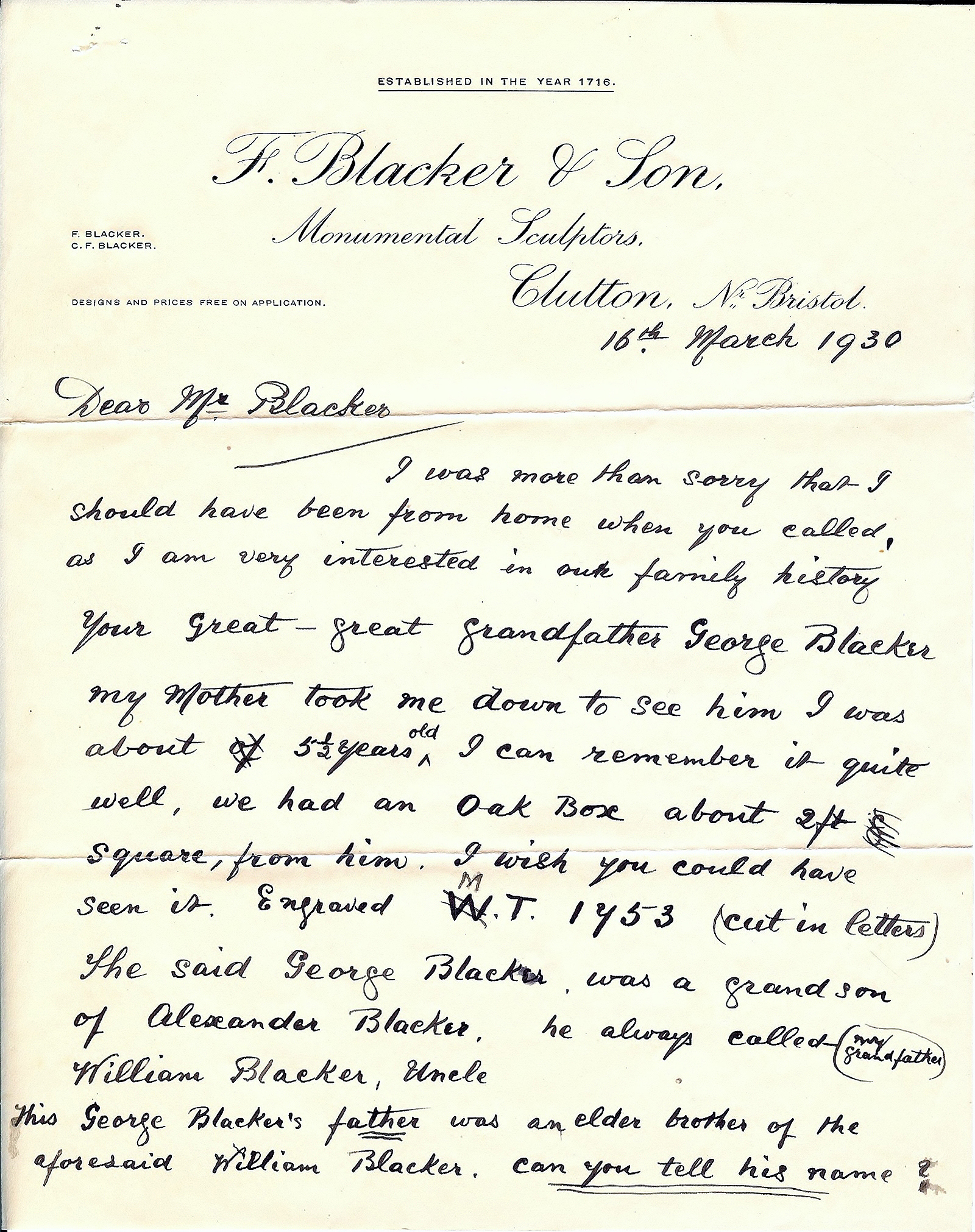 On this page Frederick explains that he visited my father's great-great grandfather, George Blacker. He also says that George's father (Tobias) was an elder brother to his grandfather, William. If Frederick is correct then my father's belief about their relationship is also correct. I know! I know!, the "fathers" are confusing.
On this page Frederick explains that he visited my father's great-great grandfather, George Blacker. He also says that George's father (Tobias) was an elder brother to his grandfather, William. If Frederick is correct then my father's belief about their relationship is also correct. I know! I know!, the "fathers" are confusing.
The earliest record of a Blacker in Clutton, Somersetshire is a christening in 1695. There is a marriage between William Blacker and Martha Stone on 27 December 1708. It appears that William is the person who established the monumental works in 1716. At that time it was located in the Clutton Parish churchyard. Later it was moved to the location it has today on the east side of the A47 road that goes through Clutton.
The rudimentary tree below shows the different generations of what I believe is the relationship between my father and those who owned the Blacker Monumental Works. The first three generations are common ancestors and below them my father's line is on the left and the owners of the works are on the right.
| William Blacker & Martha Stone | Tobias Blacker & Mary Nicholas | Alexander Blacker & Ann Nash /\ | ||
| Tobias Blacker & Mary Sage | William Blacker & Ann | |
| | | | | |
| Geroge Blacker & Elizabeth Bowditch | William Henry Blacker & Sarah | |
| | | | | |
| John Blacker & Maria Gould | Frederick Blacker & Annie Weeks | |
| | | | | |
| Edward Blacker & Merintha Althera Loveday | Charles Frederick Blacker | |
| | | | | |
| Thomas Blacker & Hettie May Wilkes | ||
| | | | | |
| Loyn Blacker & Mabel May Brown | ||
Frederick operated the business with his children Charles Frederick and Freida Marguerite. The business was large enough that they hired other workers. When Frederick died in 1948 the children continued operating it. When Charles died in 1975, Freida continued with it. She never married and when she died in 1993 she sold the business to one of the workers, a Mr. Higgins.
When we visited Clutton in 2004 Mr. Higgins still owned the business. The paragraphs below from my journal on that visit explains my feelings when I first saw it.
Friday, March 26, 2004
We drove to Clutton, to see where the Blackers on our direct line lived. These are the family members that are the first that can be proven to be our direct line. As we drove along the main road, I looked out to the left, as we passed a sign that read, "Blacker Monumental Works, established in 1716" That was the place my dad had gone to in 1930, but found the owner and distant cousin away from home. It had been established by our direct line, but had later gone to others in the family. I was so surprised, that I burst out crying. We had heard about this place all of our lives, and there it was! The owner in 1930, was a Frederick Blacker, who corresponded with Daddy for many years, and helped so much with the genealogy.
We parked down the road and walked back. There appeared to be no one at home then either, but a sign in the office window directed people around the hedge and to the door of the house, but no one answered our knock. We were disappointed, but decided to go to nearby Cameley, and hope that someone would be home later. The drive to Cameley, a very small place, was beautiful, and we found the church where Blackers and Naishes had been married, christened or buried. It was a lovely, very quiet place.
When we drove back to Clutton, thankfully Mr. Higgins, the current owner of the business was there. He was very friendly, and showed us through the home, which a William Blacker, one of our direct ancestors had built in 1716. He told us that he had bought the business from the last Blacker to operate it, a Freida Blacker, daughter of Frederick. She had never married, and he had worked for her until she became too old to operate it. It is now not owned by a Blacker, but he keeps the name of the business.
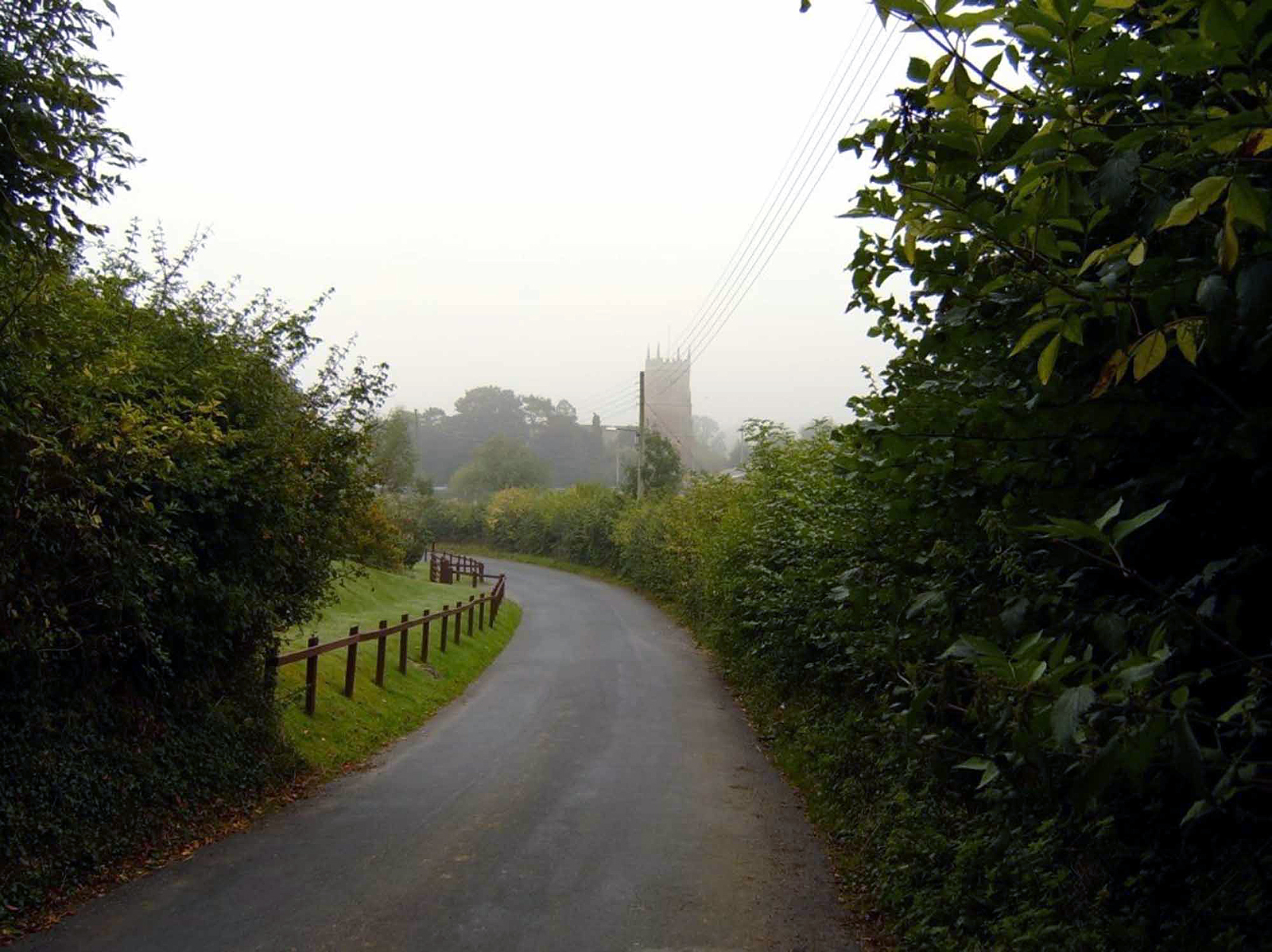 The Clutton Parish Church of St. Augustine of Hippo from the top of Church Lane in 2005.
The Clutton Parish Church of St. Augustine of Hippo from the top of Church Lane in 2005.
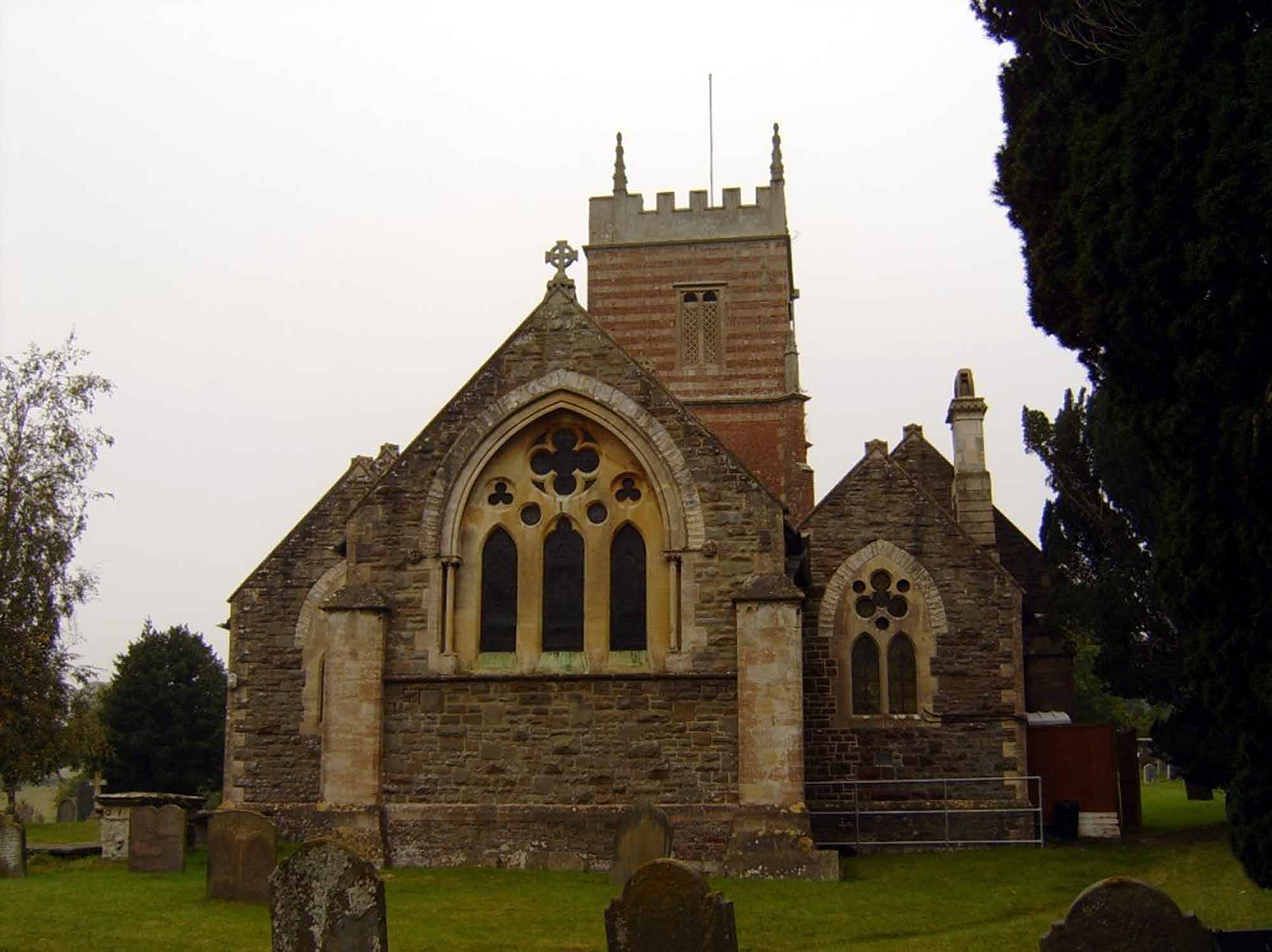 The church in 2008.
The church in 2008.
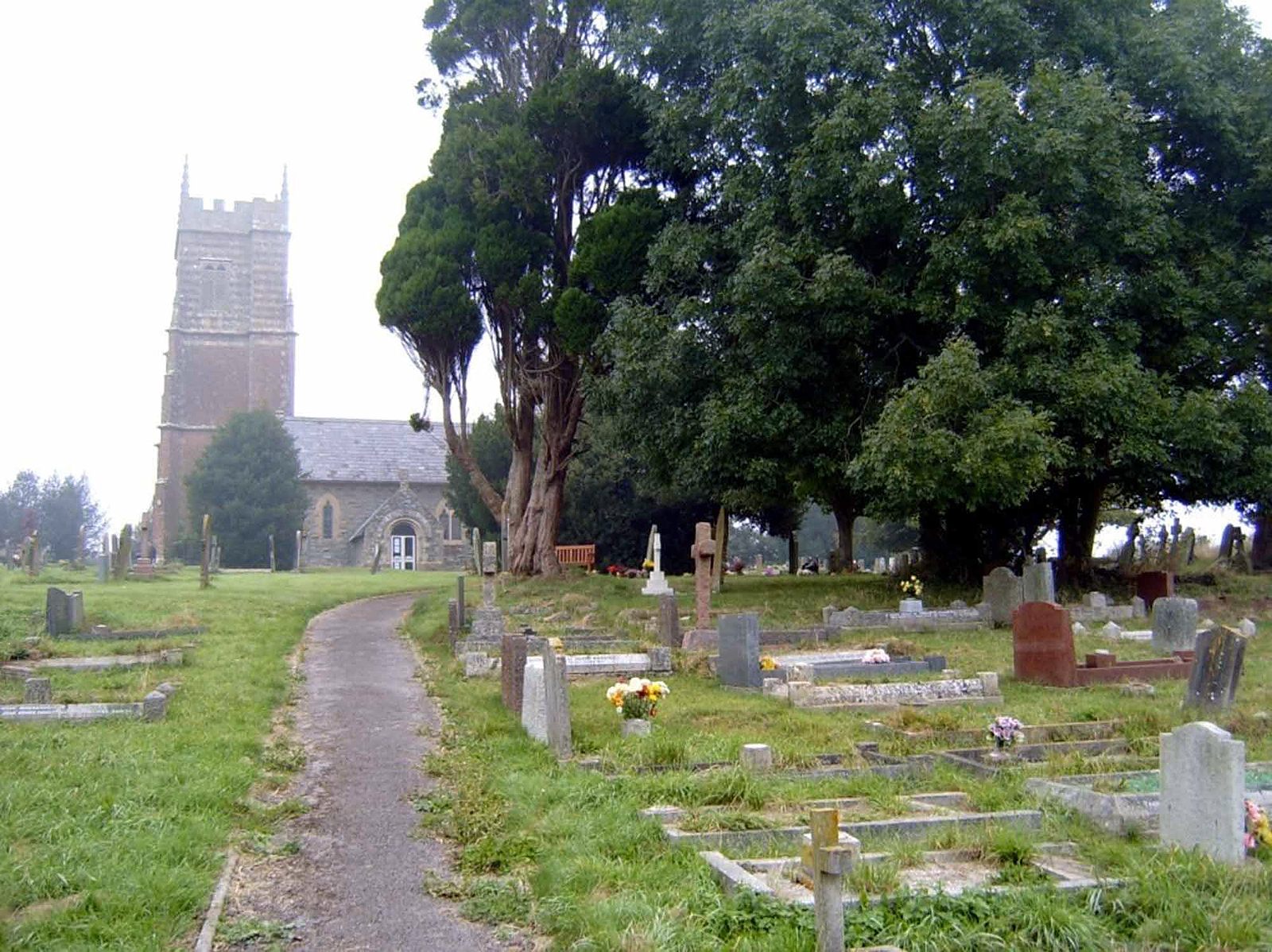 Headstones in the churchyard. Most if not all of them were carved by the owners of the Blacker Monumental Works.
Headstones in the churchyard. Most if not all of them were carved by the owners of the Blacker Monumental Works.
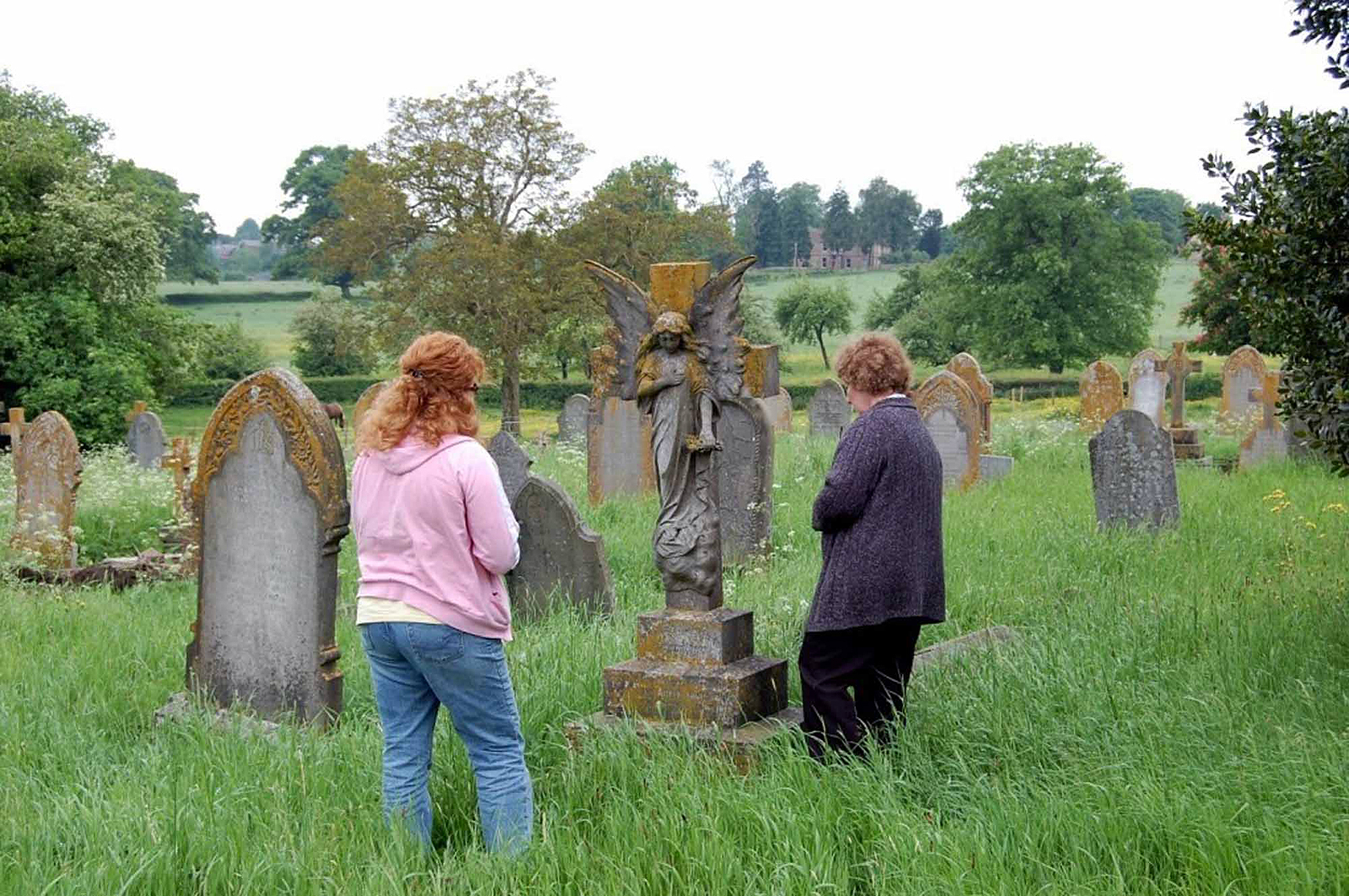 My daughter Amy and me in the churchyard in 2008.
My daughter Amy and me in the churchyard in 2008.
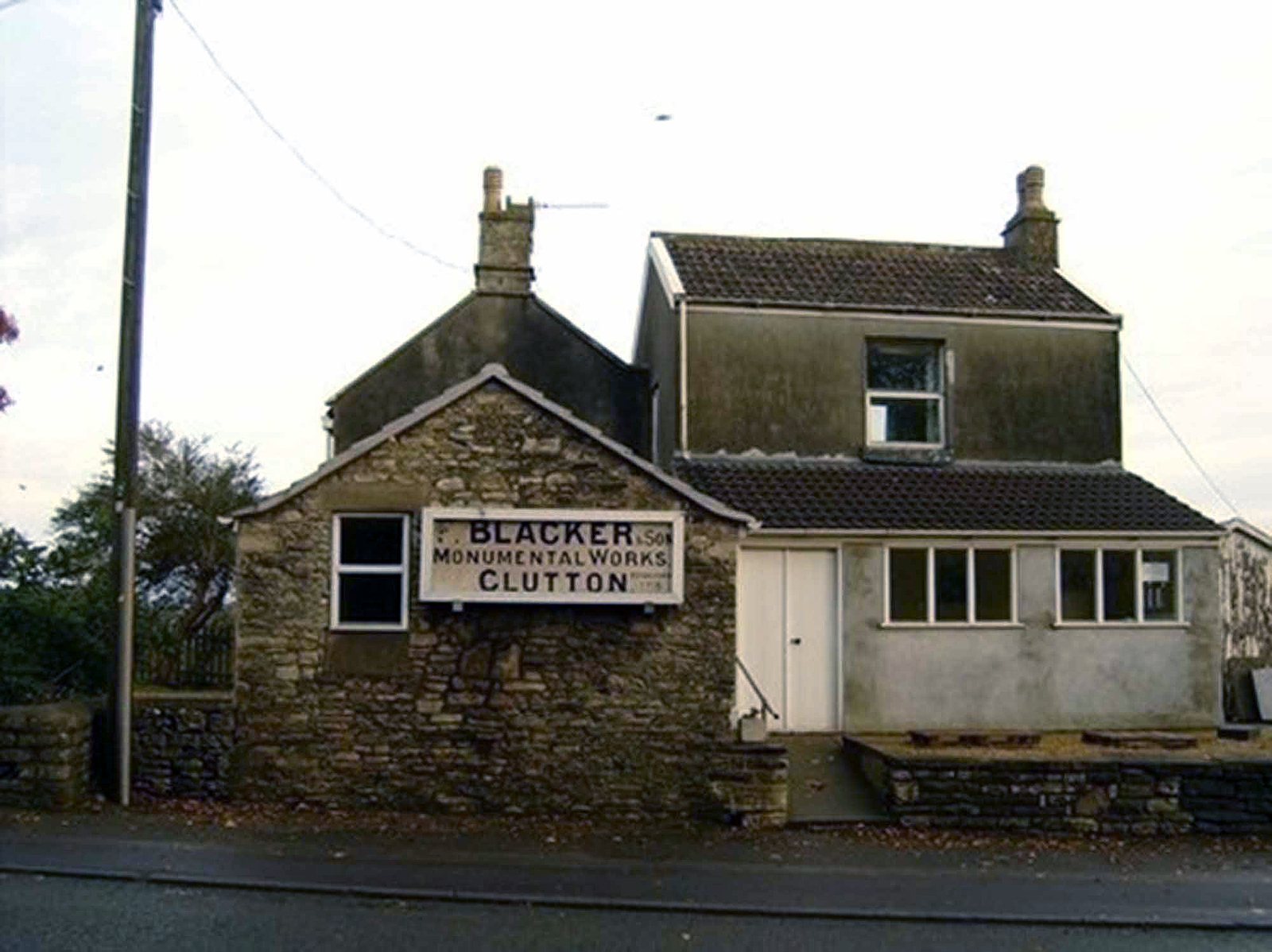 The F. Blacker and Son Monumental Works on the A47. The original workshop is in the left side and the office on the right. The family living quarters are in the back part of the building.
The F. Blacker and Son Monumental Works on the A47. The original workshop is in the left side and the office on the right. The family living quarters are in the back part of the building.
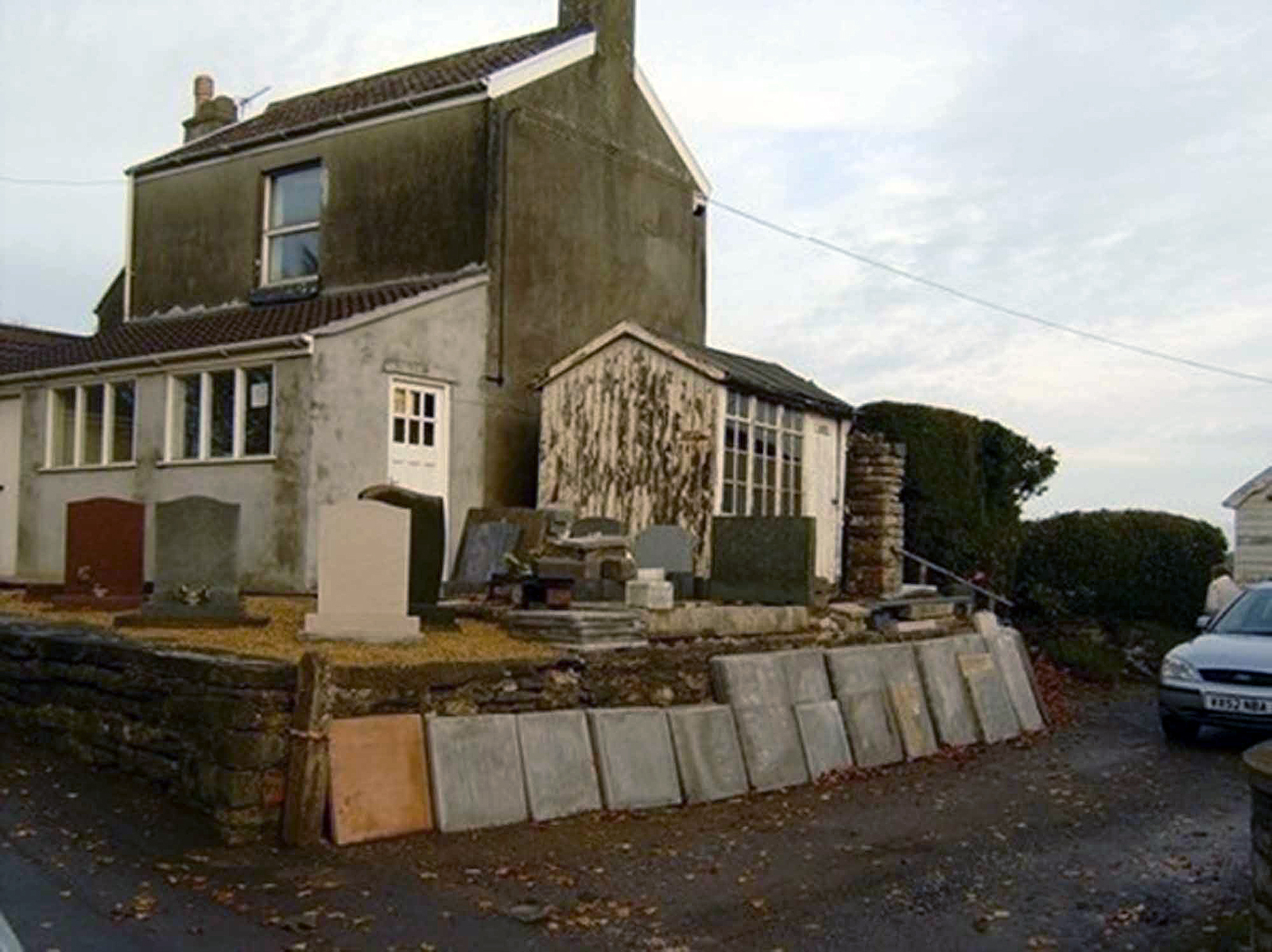 The south side of the building. The stones against the wall are being prepared to be headstones.
The south side of the building. The stones against the wall are being prepared to be headstones.
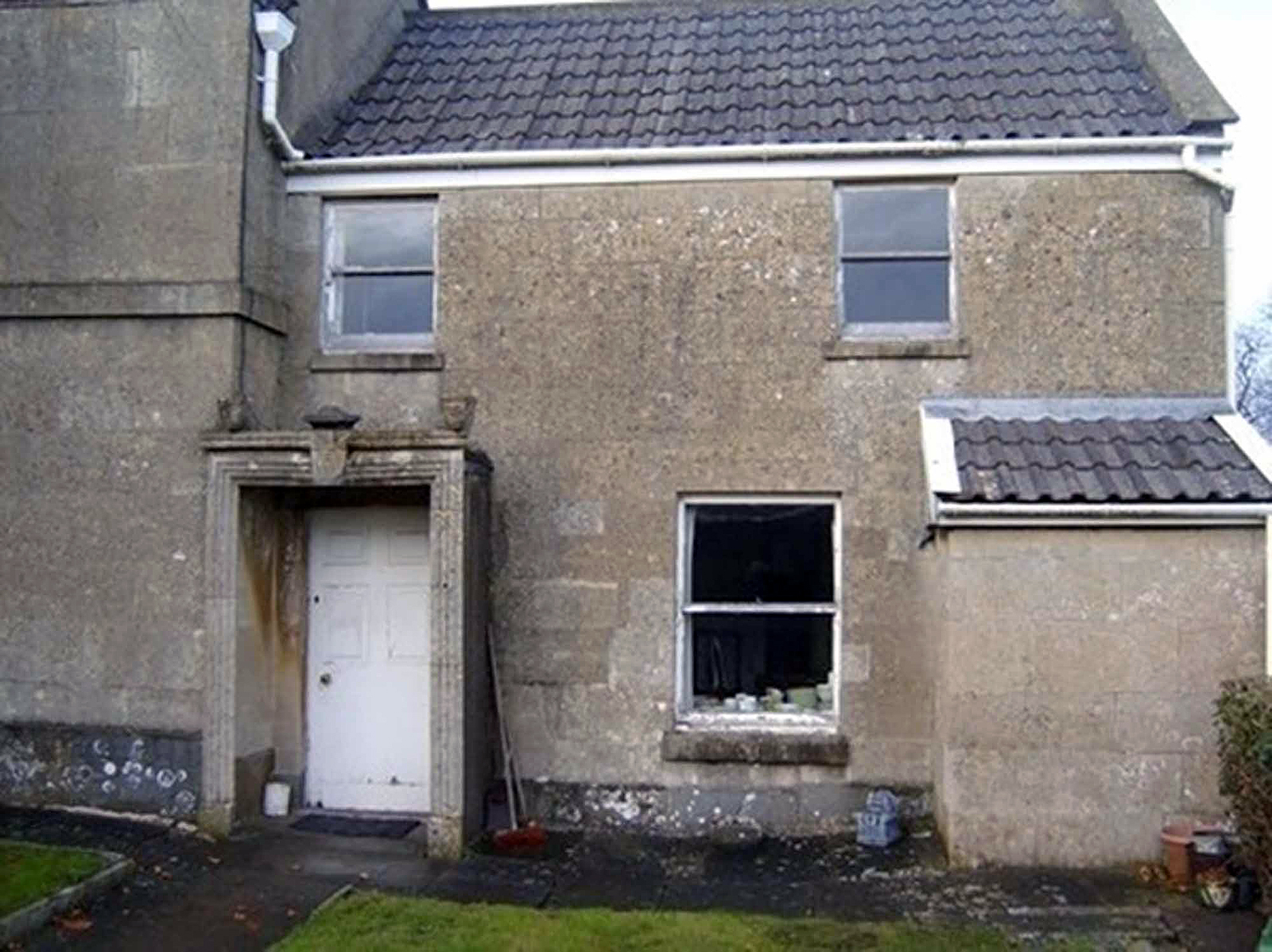 The back part of the building showing the door into the living quarters.
The back part of the building showing the door into the living quarters.
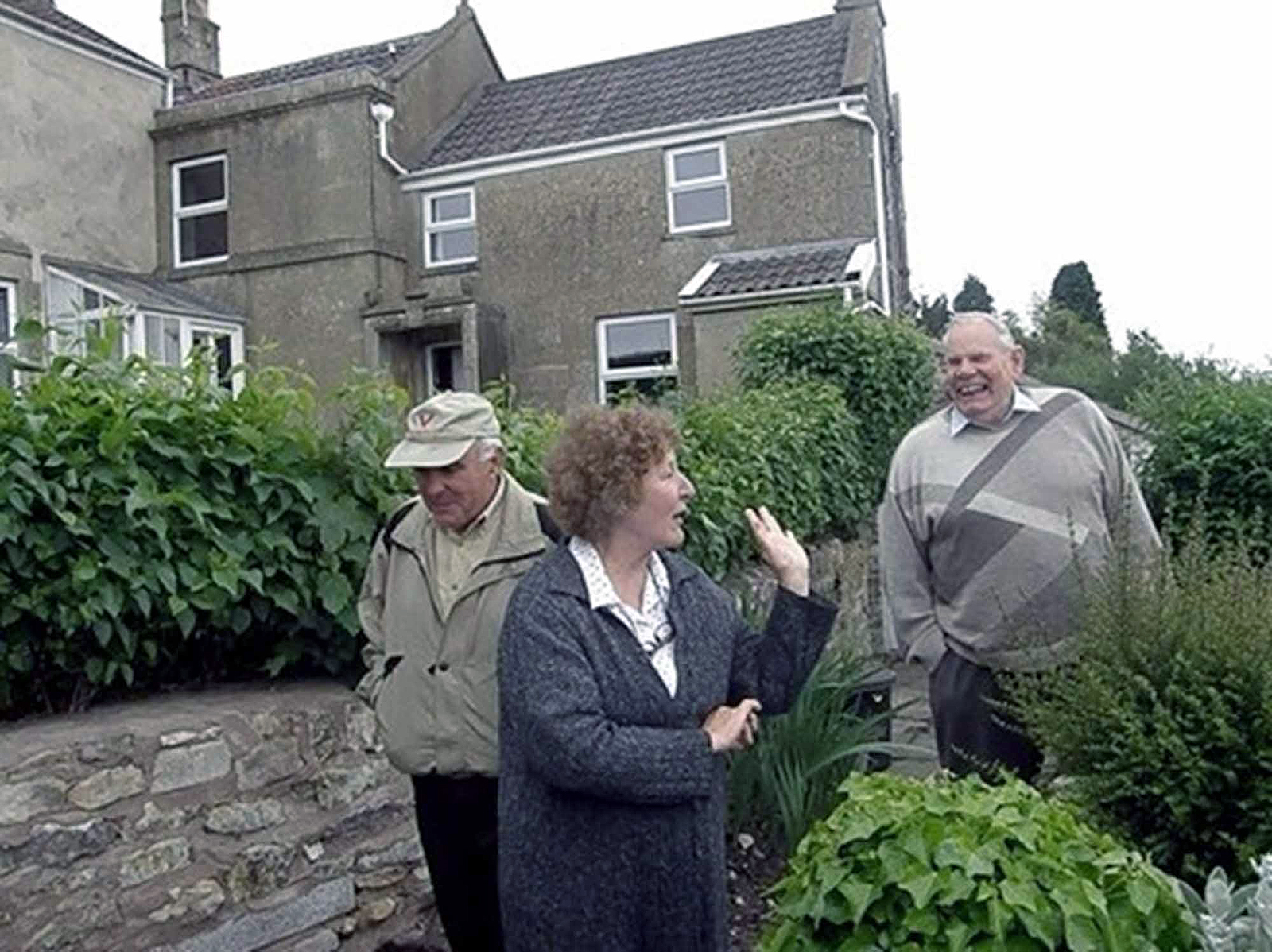 My husband and me visiting Mr. Higgins in the back garden in May 2008. The picture was taken by our daughter, Amy.
My husband and me visiting Mr. Higgins in the back garden in May 2008. The picture was taken by our daughter, Amy.
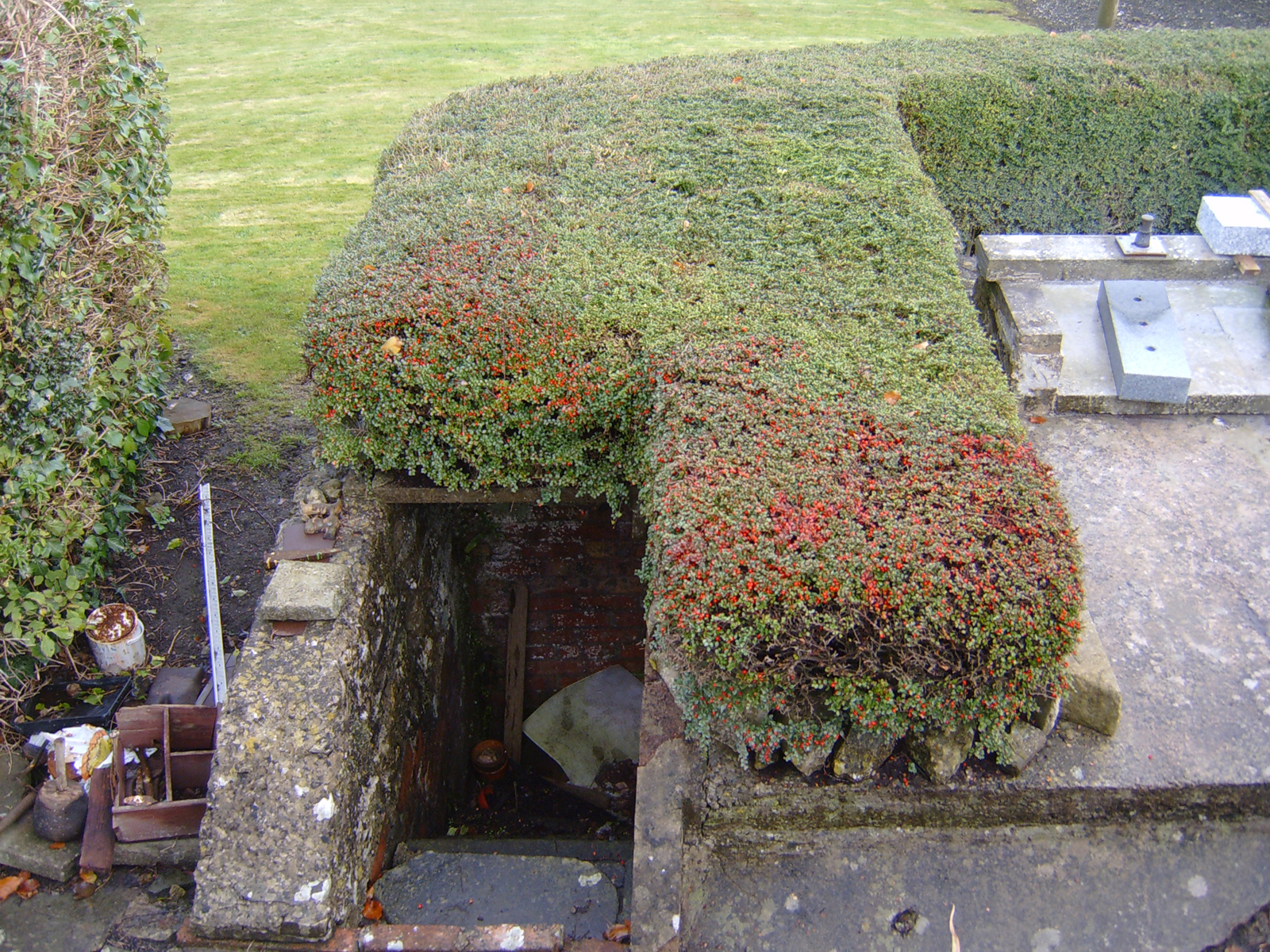 An air raid shelter in the back garden. In a letter written on 24 October 1940, Frederick said 'I have built a good strong air raid shelter underground in the solid rock reinforced with large steel girders for my family and others who live near. Notice the wooden mallet in the bottom left corner. The image was taken in 2006.
An air raid shelter in the back garden. In a letter written on 24 October 1940, Frederick said 'I have built a good strong air raid shelter underground in the solid rock reinforced with large steel girders for my family and others who live near. Notice the wooden mallet in the bottom left corner. The image was taken in 2006.
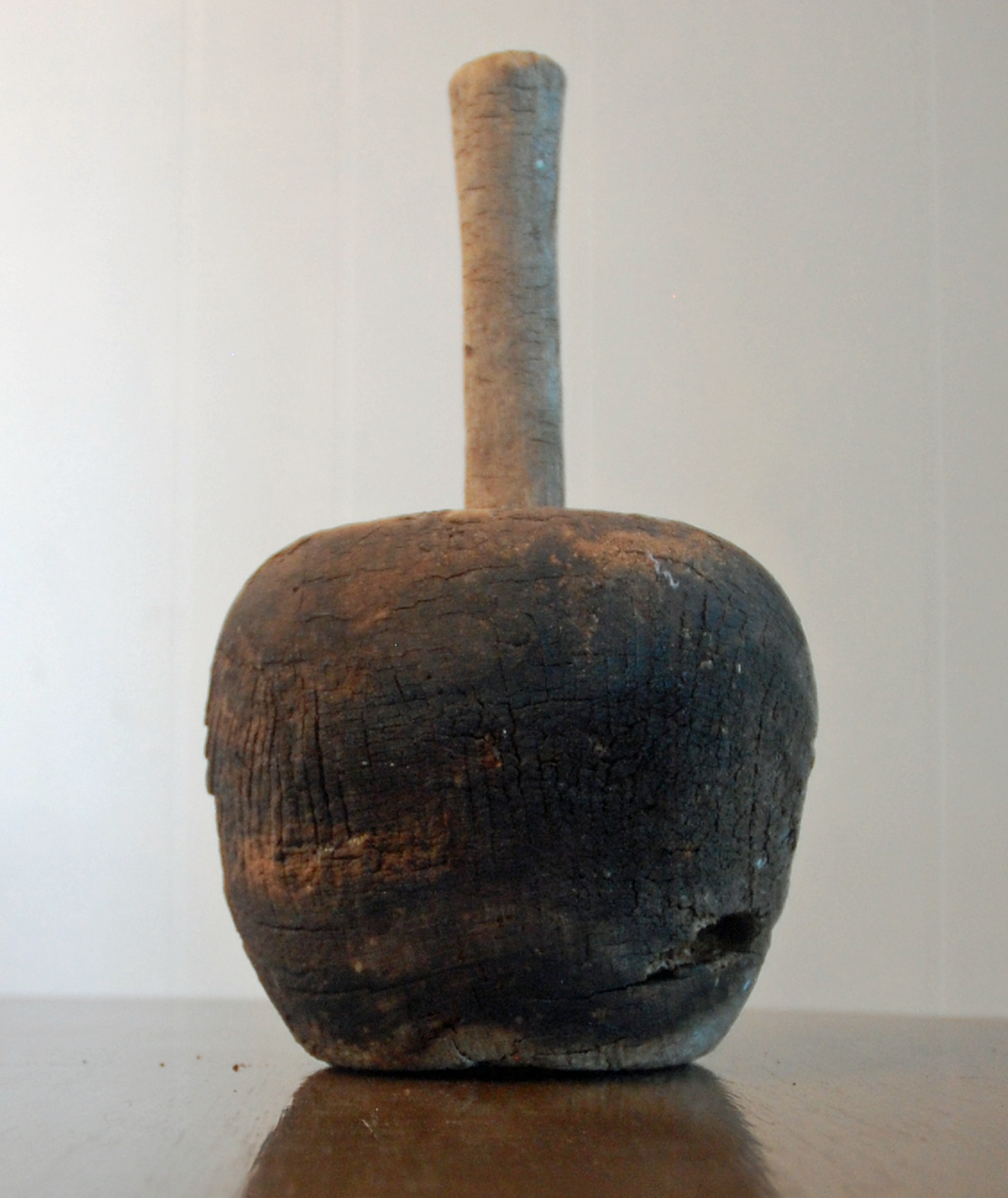 The wooden mallet shown in the previous image. It was used with a chisel to cut the letters on a headstone. Electric chisels have replaced mallets. Mr. Higgins gave it to me when we visited him in 2006.
The wooden mallet shown in the previous image. It was used with a chisel to cut the letters on a headstone. Electric chisels have replaced mallets. Mr. Higgins gave it to me when we visited him in 2006.
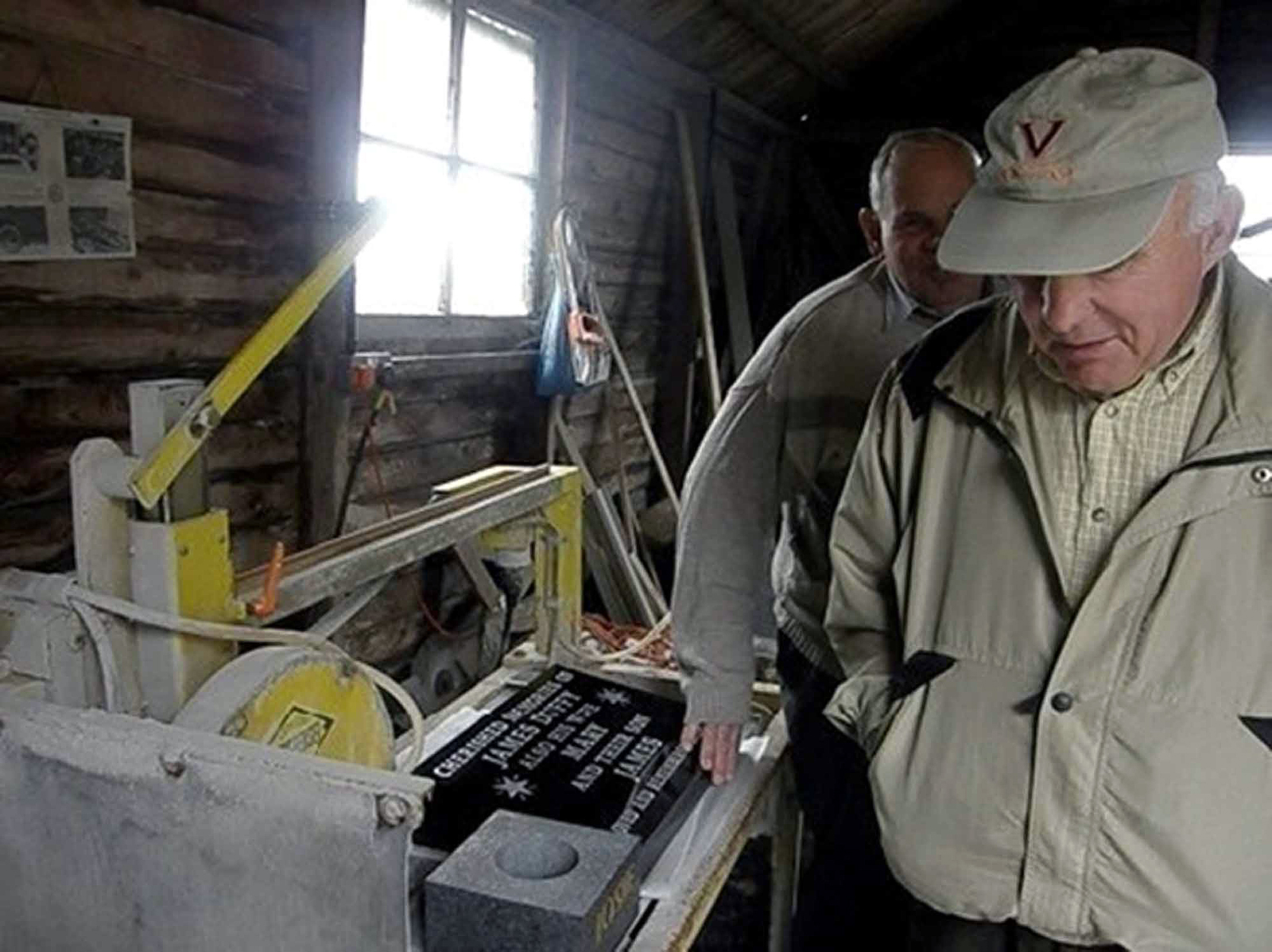 My husband, Laron and Mr. Higgins in the old workshop examining a saw used to cut the stone.
My husband, Laron and Mr. Higgins in the old workshop examining a saw used to cut the stone.
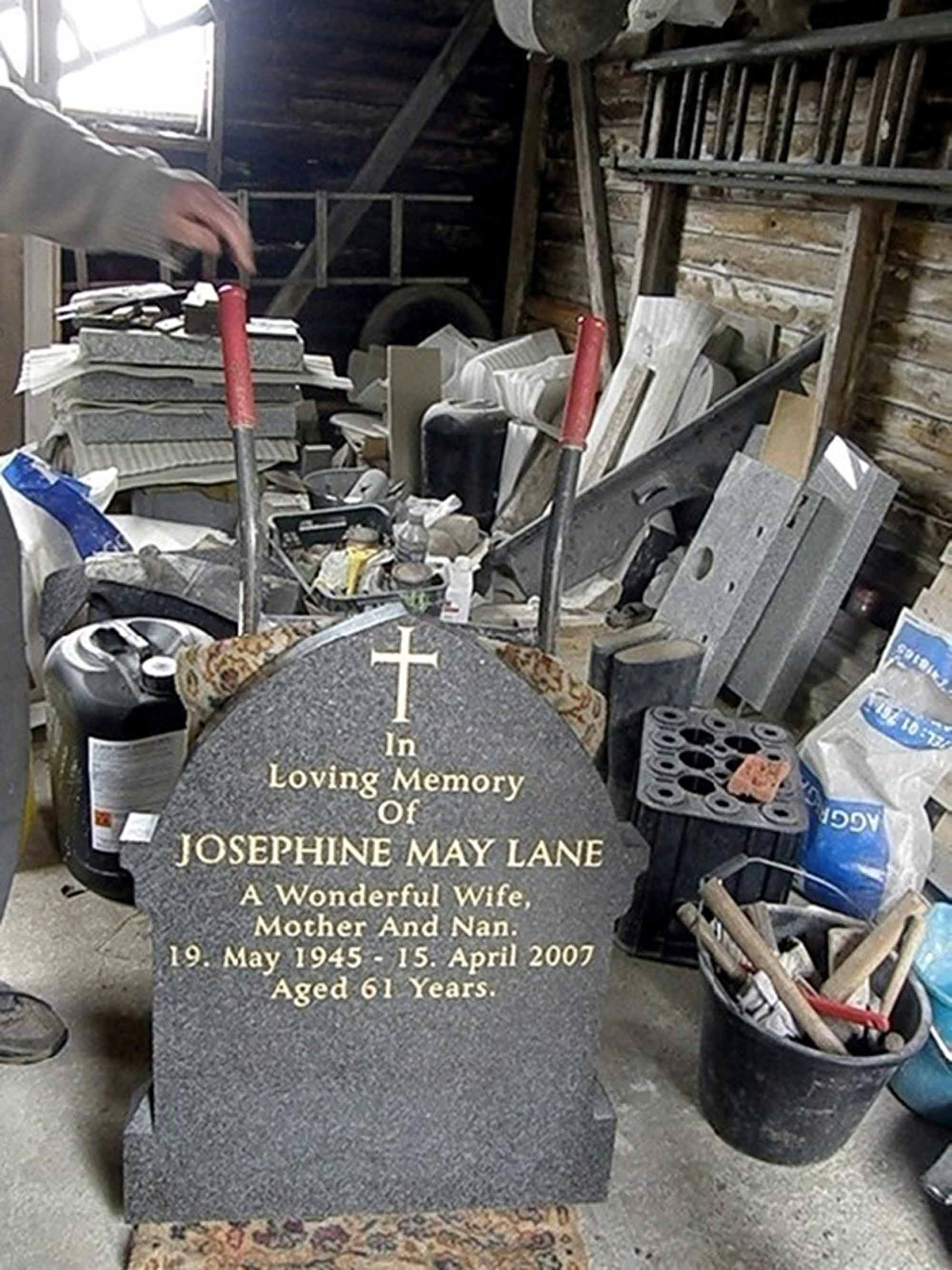 A headstone in a newer workshop ready to be placed on a grave.
A headstone in a newer workshop ready to be placed on a grave.
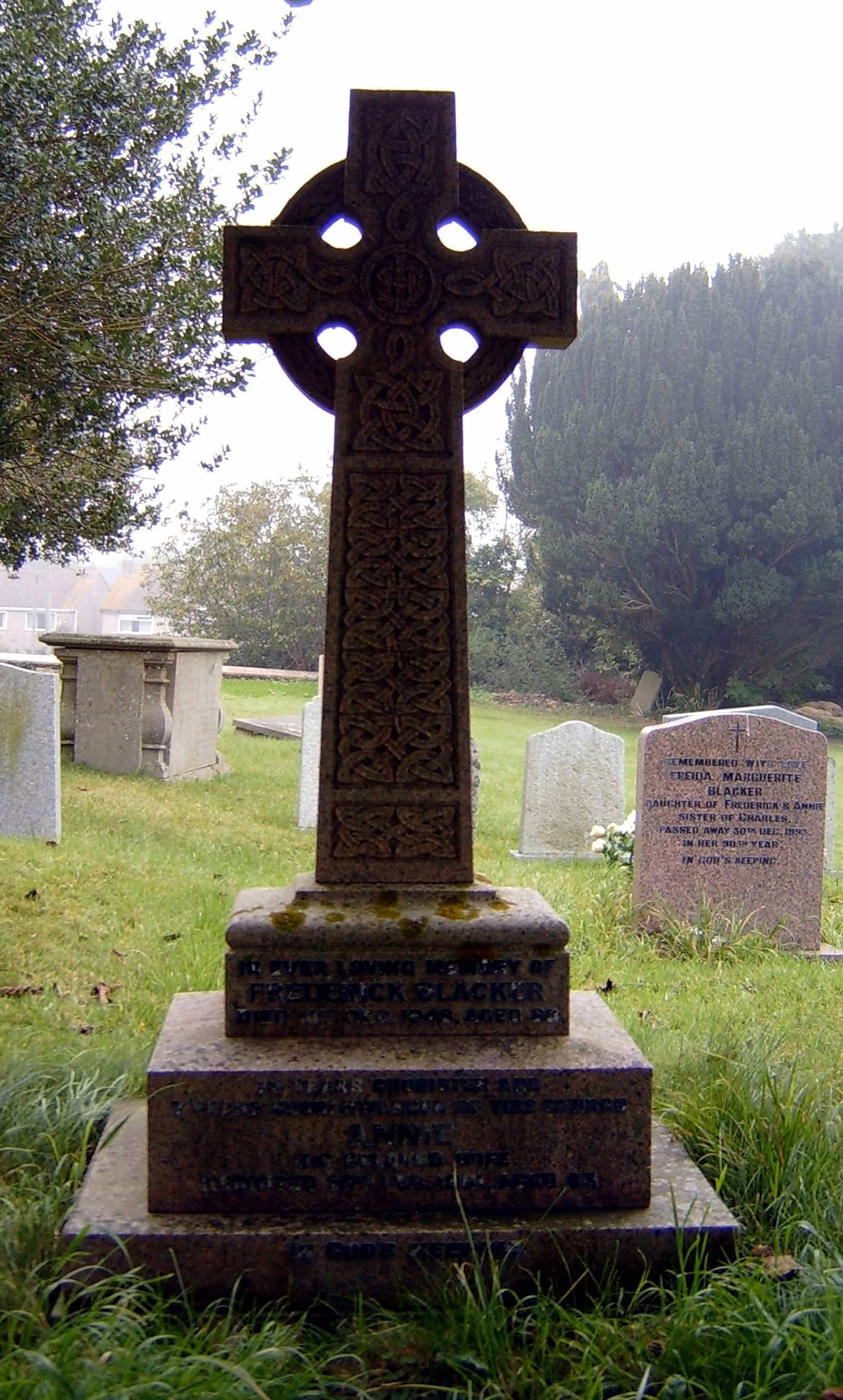 Frederick Blacker's headstone probably made by his son Charles.
Frederick Blacker's headstone probably made by his son Charles.
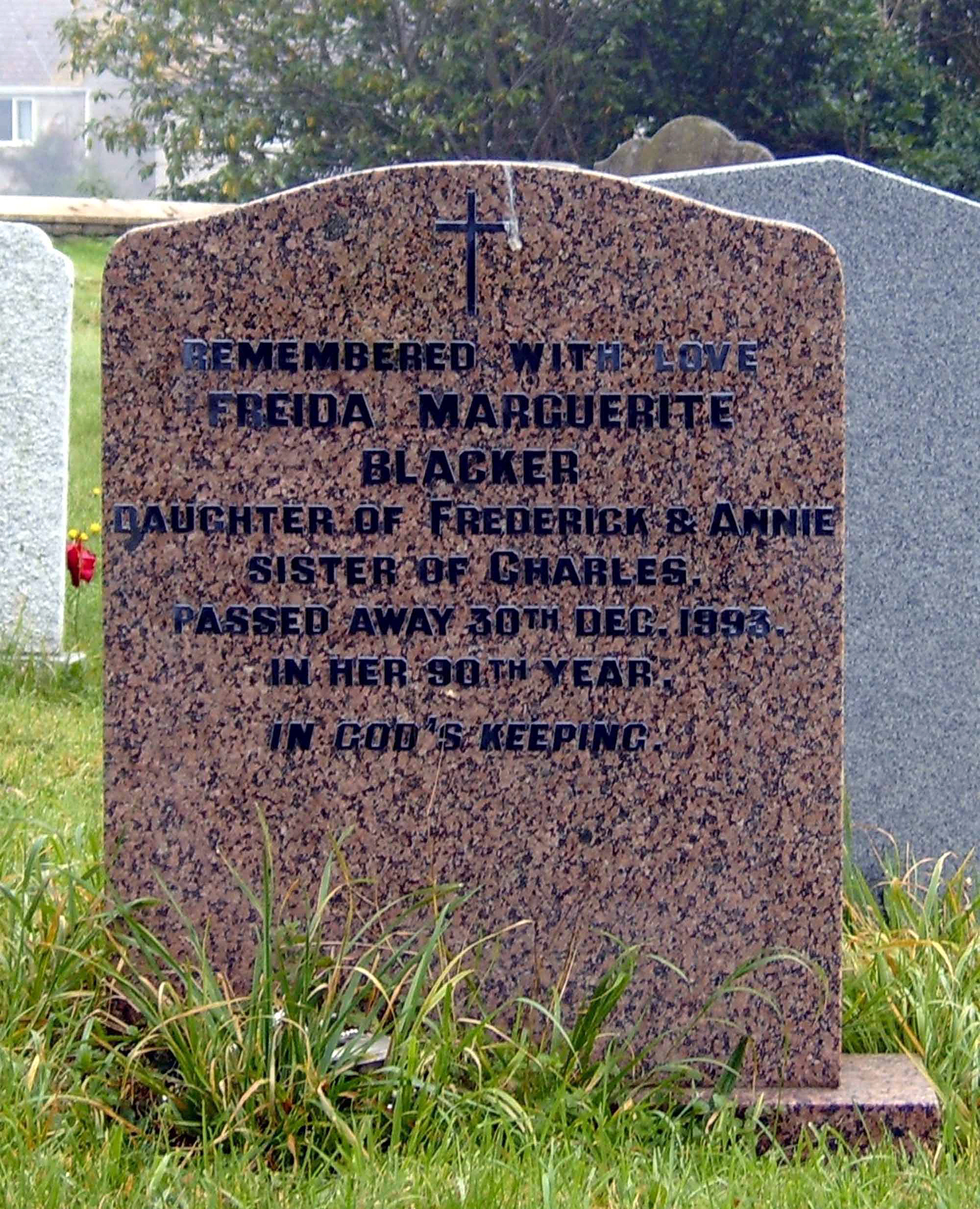 Freida Blacker's headstone probably made by Mr. Higgins.
Freida Blacker's headstone probably made by Mr. Higgins.